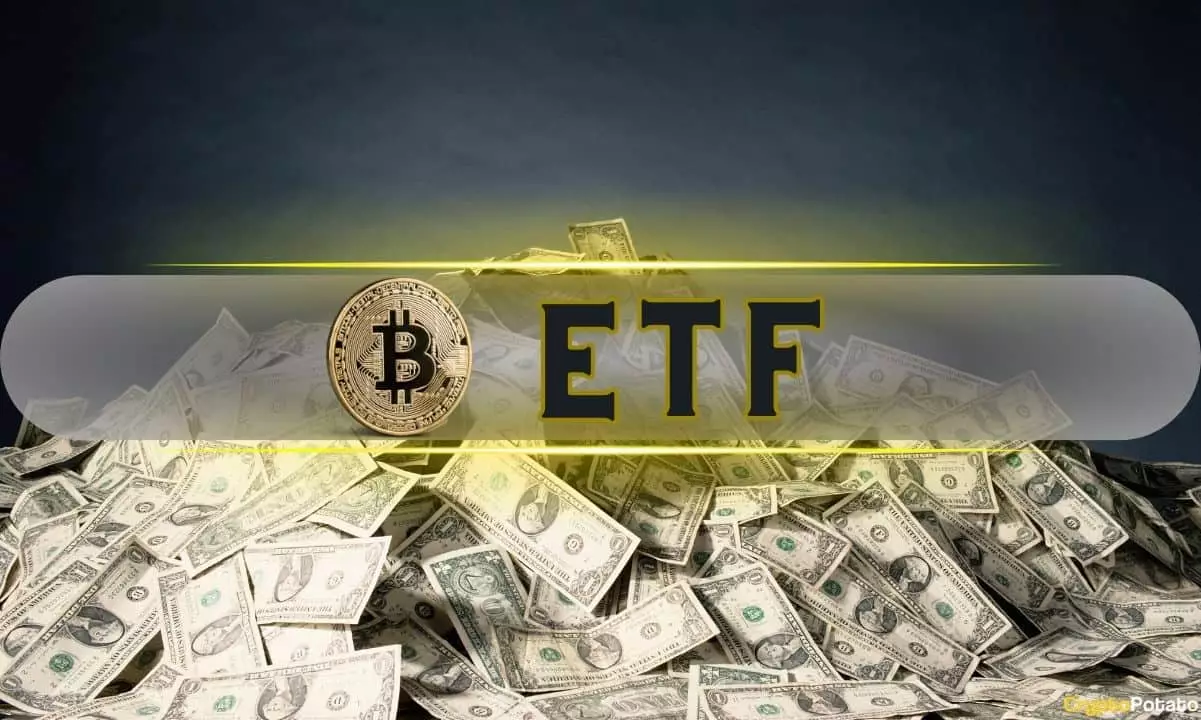Bitcoin exchange-traded funds (ETFs) have been making waves in the financial world since their recent approval. Within just six days of trading, these ETFs have accumulated an impressive number of bitcoins (BTC). As volumes increase and assets under management (AUM) soar to $3.96 billion, it is clear that investors are flocking to these new investment vehicles.
Data shared by Eric Balchunas, an esteemed senior ETF analyst at Bloomberg, reveals that the “Newborn Nine” has acquired an impressive total of 95,297 BTC since their release on January 11, 2024. Combining the assets of these newly launched funds with the Grayscale Bitcoin Trust (GBTC), the combined total reaches a staggering 647,374 BTC. Leading the pack is BlackRock’s iShares Bitcoin Trust (IBIT) with 33,706 BTC, followed closely by Fidelity’s Wise Original Bitcoin Fund (FBTC) with 30,384 BTC. Bitwise’s BITB holds 10,235 BTC, while Ark Invest/21 Shares’ ARKB and Invesco’s BTCO have amassed 9,134 BTC and 6,192 BTC, respectively. The VanEck Bitcoin Trust (HODL), the Valkyrie Bitcoin Fund (BRRR), and Franklin Templeton’s EZBC trail behind with figures of 2,566 BTC, 1,726 BTC, and 1,169 BTC, respectively. On the lower end of the spectrum, the WisdomTree Bitcoin Fund (BTCW) holds just 182 BTC.
Despite its existence since 2013, Grayscale Bitcoin Trust (GBTC) has recently transformed into an ETF. With a massive holding of over 552,077 BTC, GBTC stands as the Bitcoin ETF with the highest BTC holdings. However, on Friday, GBTC saw significant outflows amounting to $590 million. Interestingly, BlackRock’s IBIT, Fidelity’s FBTC, BTCO, and HODL outperformed GBTC and experienced their “best hauls to date,” according to Balchunas. While the total net flows for the Newborn Nine approximate $1.2 billion, with an AUM approaching $4 billion, GBTC’s AUM reached $2.8 billion, contributing to 14% of the market share.
Balchunas speculates that only a small portion of the outflows from GBTC will actually find their way into the new ETFs. Much of the funds can be attributed to the bankrupt crypto exchange FTX and traders who took advantage of the discount offered by GBTC. Moreover, the proportionality of the flows to the size of the firms is nearly perfect, indicating that the flows are driven by distribution strategies and market hustling rather than a significant transfer of assets.
With the rapid accumulation of BTC by the Newborn Nine and the dominance of GBTC, Bitcoin ETFs are proving to be a lucrative investment option for institutional and retail investors alike. As these ETFs continue to gain popularity and attract more capital, the landscape of the cryptocurrency market is set to change dramatically. The influx of funds into the Bitcoin market through ETFs indicates a growing acceptance and integration of cryptocurrencies into traditional financial markets.
The rise of Bitcoin exchange-traded funds has created a massive influx of funds into the Bitcoin market. The Newborn Nine, along with the transformation of GBTC, have accumulated a substantial number of bitcoins within a short period. Despite the outflows experienced by GBTC, other ETFs have shown remarkable success, indicating a shift in ownership and flows. As the market evolves and becomes more accepting of cryptocurrencies, the future of Bitcoin ETFs appears promising, paving the way for further investment opportunities in the world of digital assets.


Leave a Reply